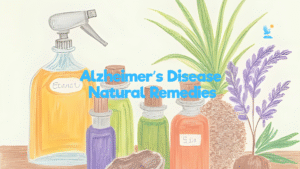When we think about staying healthy as we age, we often focus on eating a clean diet, managing stress, or getting enough sleep.
But building and maintaining muscle is just as critical—and often overlooked.
Muscle doesn’t just help us look lean or lift heavy things—it plays a huge role in metabolic health, hormone balance, mobility, and even immune function.
Here’s why muscle should be a top priority, especially after 30:
1. It Keeps Your Metabolism Running Strong
Muscle tissue burns more calories than fat, even when you’re not moving.
In fact, research shows that increasing lean muscle mass raises your resting metabolic rate, which can aid in long-term weight maintenance and improved body composition.¹
As we age and naturally lose muscle, our metabolism tends to slow down.
Preserving muscle helps counter that.
If you remember my post about metabolic health, you can see here why it’s crucial to preserve muscle.
2. It Helps Control Blood Sugar
Skeletal muscle is one of the main places your body stores and uses glucose.
The more muscle you have, the better your body can handle blood sugar.
This improves insulin sensitivity and reduces the risk of type 2 diabetes.²
It’s one of the most natural ways to balance blood sugar—no crash diets required.
3. It Protects Your Hormones
Muscle plays a big role in hormonal health, especially as we age.
Regular strength training and muscle maintenance help regulate stress hormones, such as cortisol, and support healthy levels of testosterone and estrogen, which naturally decline with age.
4. It Helps You Stay Strong, Mobile, and Independent
Muscle acts as a support system for your bones and joints.
It reduces the risk of injuries, improves balance, and makes everyday tasks—like getting out of bed or lifting groceries—feel easier.
After the age of 60, people who maintain their muscle mass are less likely to suffer falls, hospitalizations, or disability.³
I’m not sure about you, but I like the idea of taking care of myself as best as I can throughout my life.
For example, it’s important to be able to do push-ups, handstands, and splits after 40.
My martial arts teacher says that to live to a healthy 100, you must be able to do a full back bend, splits, and a handstand.
These movements help you maintain mobility and strength.
It’s important in situations where you need to use your arm strength to pull yourself out of something or simply have the muscle to handle a fall.
This past winter, I was walking my Samoyed puppy early one morning in Mount Shasta, and there was a bit of black ice on the pavement, so I fell.
I landed on my hip, and thankfully, thanks to strength training, stretching, and muscle preservation through a balanced diet, I didn’t notice much more than a bit of soreness for a couple of days.
5. It Shields You From Age-Related Muscle Loss (Sarcopenia)
Starting around age 30, most people begin to lose 3–8% of their muscle mass per decade.
That number rises even faster after 60.
A condition—called sarcopenia—can lead to weakness, fatigue, and frailty.
The good news is that it’s not inevitable.
With proper nutrition, such as casein protein and resistance training, you can slow or even reverse this process.
6. It Supports Your Immune System and Brain
Your muscles act as a reserve during times of illness or stress.
They help produce myokines—messenger molecules that communicate with your brain, immune system, and organs.
These myokines have been shown to support mental clarity, mood, and reduce inflammation.












